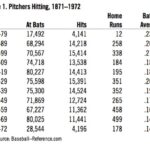The concept of prostitution has been intertwined with human history since its earliest documented periods. References can be found even in ancient scriptures, such as the Book of Genesis, where Judah interacts with a prostitute, later revealed to be his daughter-in-law Tamar. This illustrates the long and complex relationship societies have had with the profession.
Defining Prostitution
According to a straightforward dictionary definition, a prostitute is “a person who has sex with someone for money.” However, the reality is far more nuanced. The exchange of money or favors for sexual acts or companionship takes on many forms, blurring the lines of this simple definition.
Consider these scenarios:
- A woman who sleeps with her boss to advance her career or receive expensive gifts.
- A man who marries a wealthy woman for her inheritance.
Do these situations qualify as prostitution? The answer is subjective and highlights the complexities involved in defining and categorizing such interactions.
The Dark Side: Forced Prostitution
The sex industry is often associated with exploitation and secrecy on a global scale. To mitigate these potential abuses, stringent regulations and supervision are implemented in many red-light districts, with the primary goal of preventing forced prostitution and human trafficking.
Image of an exhibition at the Red Light Secrets museum showcasing the stories and experiences of sex workers.
A Historical Perspective: Amsterdam’s Red Light District
Amsterdam’s Red Light District, known locally as ‘De Wallen,’ is the city’s oldest neighborhood, dating back to around 1385. Throughout its history, it has been both celebrated and condemned for the presence of women offering sexual services.
Amsterdam’s role as a major trading hub with a large port played a significant role in the district’s development. In the 14th and 15th centuries, sailors awaiting their ships frequented De Wallen, seeking entertainment in the form of readily available beer and women in the numerous bars and inns. This created an environment where prostitution thrived.
Legality, Threats, and Diseases
Prostitution was even legal in the 15th century, although officially discouraged. This stance shifted in the late 16th century when Amsterdam embraced Protestantism. The new city council attempted to ban prostitution, threatening severe consequences for both clients and sex workers. However, these threats were largely symbolic, as enforcement remained lax.
During the prosperous 17th century, Amsterdam’s Golden Age, prostitution flourished. It is estimated that around a thousand women were engaged in selling sexual services during this period. Particularly after summer, when ships returned from the East Indies, sex workers were in high demand, catering to the needs of sailors returning from long and isolated voyages. While this offered financial opportunities, it also led to a surge in sexually transmitted diseases, such as gonorrhea and syphilis, which often proved fatal. This highlighted the risks associated with the profession.
